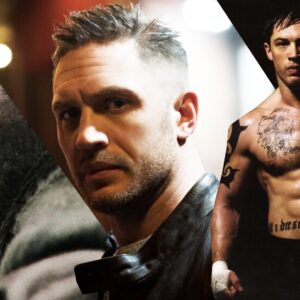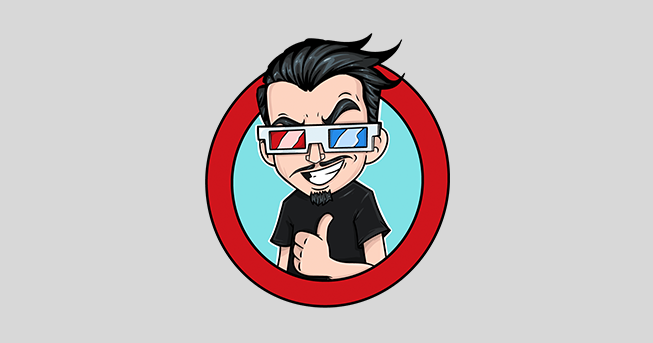Last Updated on August 5, 2021

John Hillcoat began his career directing Nick Cave and the Bad Seeds music videos. From there, he went on to make movies with the musician. The director went on to direct such critically acclaimed films as THE ROAD and THE PROPOSITION. In his latest feature LAWLESS, he returns to the world of outlaws – along with his friend and partner Cave.
Starring Shia LaBeouf, Tom Hardy, Gary Oldman and many more major Hollywood talents, Hillcoat has created one of the most visual striking films of the summer. It is as beautiful as it is violent. With a haunting score and terrific performances, LAWLESS rides into theatres bringing something fresh and invigorating to your local theatre.
Recently, JoBlo.com had the chance to talk with the director about the film and about his inspiration to take on this part of American history. We talked about casting, and the long process of bringing his latest to fruition. And finally, we talk about shooting on film versus digital, and how the world of cinema is changing right before our very eyes.

What is it about that time period in American history that interests you as a filmmaker?
Well, I wasn’t really looking for a piece about the Prohibition. I love genre films and I was actively seeking a way to make an American gangster film. I was looking at more contemporary material, like GOODFELLAS and THE SOPRANOS. Then, with the book the film’s based on, it actually drew my attention that it was weaving in another favorite genre of mine: the western. It seemed to be where the West was ending and the gangster era began. It was particularly refreshing seeing the guy in the back woods as opposed to the Capone’s in the big city. Of course, that was the big, modern, organized crime. It was the biggest crime wave in history and I love those films based on that. WHITE HEAT, SCARFACE and BONNIE AND CLYDE were always among my favorites. It touched on a lot of those things, but from a fresh perspective from the foot soldiers in the back woods. Traditionally, those guys have been seen in that comic, 1970’s Burt Reynolds type films and I wanted to implement these real characters and have it based on this true story.
Well, ironically enough, my Granddaddy was a moonshiner back in the day, so, I appreciate this on a whole ‘nother level, man.
Wow. There you go. You know, America has had a long, deep history involving the struggle between rich and poor and moonshine and whiskey and violence all have a part to do with that.
Now, this film has been with you for quite a while and it started off with a fairly large budget. Can you talk about the challenge of keeping it going and finally seeing it through?
Well, I have to hand it to Shia (LaBeouf). He was the first person on and he really stuck with it. He would not let it go and that was very important, but basically, it was incredible timing. I saw a real connection with this movie to modern times and then, sure enough, there’s this whole global economic collapse and the studios just suddenly said that they couldn’t make these sorts of movies anymore. Then, every studio in America said that they couldn’t do it, either. There was a whole different cast. Film is a pretty unrelenting, grueling business. Unfortunately, we had many offers to make the film set in a city, instead of using the country side, which I thought was so special and unique. With film, everyone tries to pin down a pattern and it is a business and there’s a commercial side to it, but the rules can be rewritten and broken.

Absolutely! So, Shia stuck with this. How early did he come on and how did you know he was the right one for this naïve sort of character?
Well, when I first met him, he could hardly sit still. He was so bumbling with energy and just jaded from working on the big blockbuster franchise films. I think if he saw another green screen, he would’ve lost it. He just wanted to do something different and he honestly reminded me of his character, Jack. He had a youthfulness and he idolized all these other older actors in the film. I remember first seeing him way back in A GUIDE TO RECOGNIZING YOUR SAINTS and DISTURBIA. I thought he took acting very seriously. He’s real and he’s raw and I think that he’s very talented. I was also very reassured and pleased that actors like Guy Pearce and Gary Oldman were genuinely blown away by him.
What an amazing cast you finally ended up with. How did you come along acquiring actors like Guy Pearce and Gary Oldman. I mean, obviously you’ve worked with Guy before. Did you just call him up and say, “Hey! I need you back!”
Well, no. Guy is very particular. It certainly was an advantage that we enjoy working together. Luckily, he’s so versatile. I can always find something there with him. Gary Oldman and Guy Pearce have always wanted to work together and I’ve always wanted to work with Gary. So, it’s that series of connections that lets me work with people like that. Also, with Gary, the Floyd Banner character he plays was meant to be like the way Jack, Shia’s character, sees him, as the iconic gangster that we all love and are impressed by. So, we needed someone with the right amount of gravitas to pull that off and Gary Oldman pulled that off in spades. We were all wishing that we could have more of him. And then, of course, we have Jessica Chastain and Mia Wasikowska who are very different characters with very different kinds of energy, but they were such a welcome relief and contrast when compared to the other characters. I’m thrilled. I couldn’t be more thrilled with my cast. Oh, and of course, there’s Tom Hardy.
He’s fantastic.
He’s very audacious and he’s very bold. He really takes risks which I think can create extraordinary results.

Now, one of the first things that I noticed was Nick Cave’s soundtrack. It is absolutely stunning. You’ve known and worked with him for a long time. What is it about your relationship that allows you two to work so well together?
Well, I’ve known him since I was a teenager. Ever since Nick was a kid, whenever he had free time, he would spend it watching movies. Whenever I had free time, I would listen to music. We’ve been very inspired by the same material. I grew up in America and brought back a lot of music anywhere from Folk to Blues to Country and Nick was very influenced by that. He was particularly influenced by the South and what it had to offer us, with writers like Flannery O’ Conner and Faulkner. Things like that have inspired us for a long time. We were good friends..sorry we ARE good friends. [Laughs.] We grew up together. You find these people in your life and when there’s a creative spark, it’s about the doing of it. By the time every film wraps and we’re editing or doing post production, we’re always talking about the next thing. With the music, we talk about it when he begins to write the score. So, it’s an unusual process. I think that having it begin and end with him brings a certain coherence to the film as a whole. The music is embedded in the story in a very special way. He has a great music collaborator, Warren Ellis, that does the musical work with him and that works great. We try and push each other and challenge each other creatively which is very fruitful.
Well, I like the fact that the score pays tribute to the period it’s representing, but at the same time, some songs are re-workings of more contemporary music, like Velvet Underground…
Well, we wanted to make that contemporary connection with the war on drugs and the prohibition. They both gave many similarities and some of the same issues and problems are still there. When you hear the lyrics of “White Light, White Heat”, you know Ralph Stanley is singing about moonshine, whereas when Lou Reed sings it, he obviously is singing about something else.

Yeah, exactly. Now, I also wanted to point out the kind of ironic notion that you’re making a film that’s set a hundred years ago, yet you’re shooting it on digital. I mean, it looked fantastic and you really made it work, but was there a time when you wanted to do it on film?
I’ll say this: I always wanted to do it on film. I get very anxious and I have a lot of reservations about digital. Even though I was inspired by [David] Fincher’s ZODIAC, and I thought it was one of the first great digital films that has a cinematic sensibility, I just love the organic richness and depth that film has. I think digital has a flatness. There’s too much information. There’s more going on that our eye can catch and it has a plastic feel to it as opposed to the organic feel film has. It’s like comparing flat beer to a rich glass of red wine. With that said, the camera we were using allowed us to get a lot of filming done, which means more time and more money. I know that we are in a major technological revolution that, I think, is more significant than the printing press and there is no way to stop digital. Sadly, I think it’s kind of jumped the gun. I think it’s all a bit rushed. I mean, people aren’t even making film cameras anymore, but I learned a lot. I tried to maintain that “film” look.
LAWLESS is currently playing at a theatre near you.



















Follow the JOBLO MOVIE NETWORK
Follow us on YOUTUBE
Follow ARROW IN THE HEAD
Follow AITH on YOUTUBE